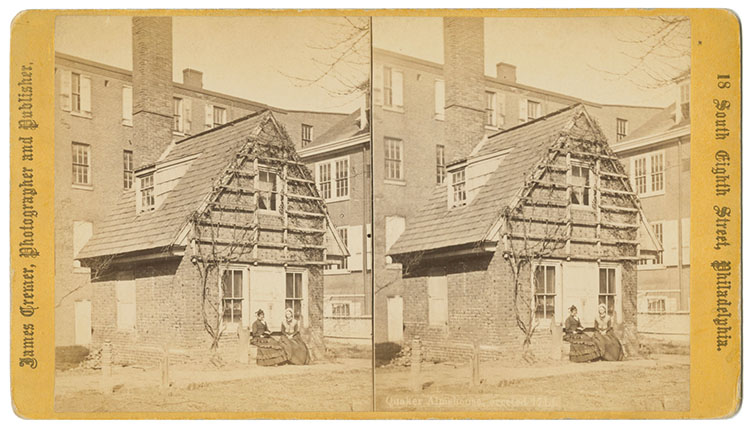National Treasure: Progress and the Past
Hover over image for details. Click Here for Next Stereograph
James Cremer, A Reminiscence of the Old Quaker Almshouse, ca. 1876. The stereograph contains an explicitly nostalgic title. Directly underneath the title of this stereograph is a note revealing that the almshouse no longer exists. By itself, this text suggests a building cannot be anything other than transient. At the same time, the wording lauds the almshouse’s importance for society — its reputation as a provider of useful herbs and narrative inspiration — which outlasts the physical building.
![James Cremer, [Gloria Dei Church], ca. 1873.](images/Section 2/p-2011-47-1966v.jpg)
James Cremer, A Reminiscence of the Old Quaker Almshouse, ca. 1876.
Through the poetic allusion and the brief recounting of the almshouse’s history, collective memory is deliberately invoked as a way of transcending the ending that was realized (i.e., demolition). The stereograph itself serves in this preservation process, as a photographic record of the almshouse, and by educating others about the almshouse’s history. Thus, Cremer’s stereograph stresses the power of social memory. The Keystone View Company’s William Penn stereograph (shown earlier in the exhibition) also emphasizes the power of group memory to preserve an existence - in that case - a human one.
